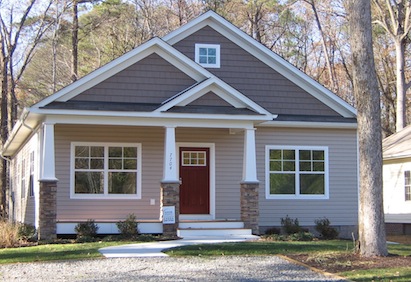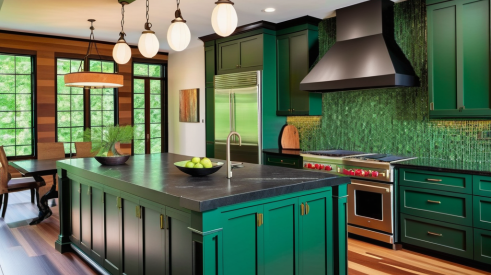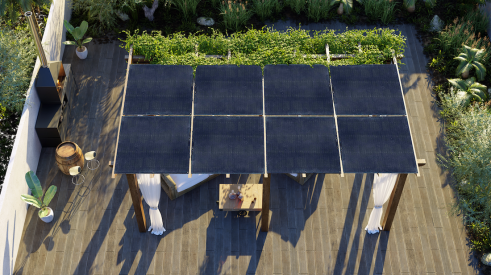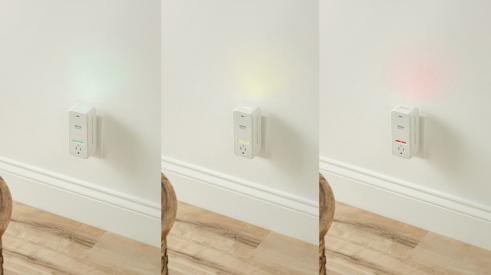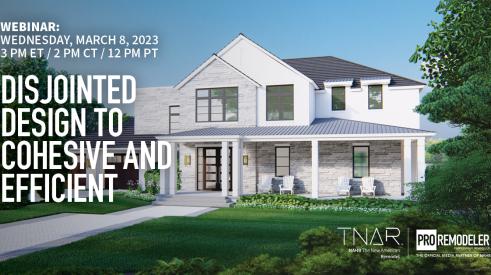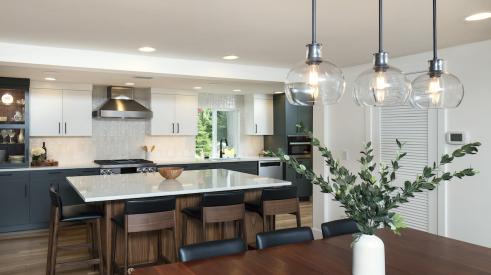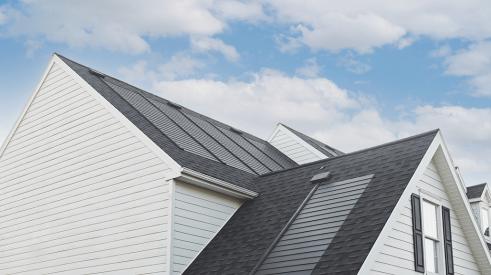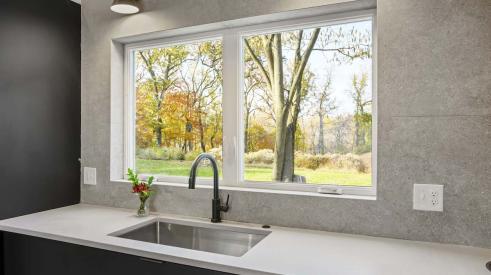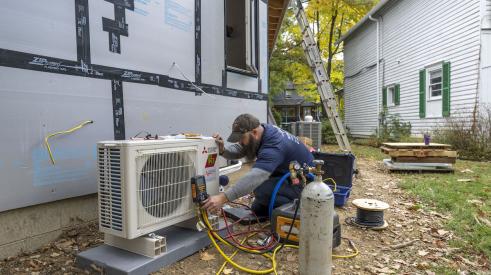Going green doesn’t have to cost more. Experts at the NAHB Research Center have identified several design and construction tactics builders and remodelers can employ to make green more affordable.
Here are a few beneficial building practices the Research Center has identified by working with contractors and from research the Research Center conducted with HUD.
Look for two-for-one product benefits
To maximize green benefits while keeping construction costs low, use products or practices with multiple green features. For example, when specifying cabinets or cabinet materials, look for those that have low- or no-formaldehyde content and are made of recycled material. That way, you may be able to gain green certification points for both indoor environmental quality and resource efficiency.
While most green rating systems won’t allow for “double dipping” on points (i.e., claiming points in more than one area for the same green attribute in the same product or practice), most will allow for multiple green attributes in the same product to be counted across multiple point categories.
Don’t forget about water efficiency
In our work with HUD, we found that water efficiency improvements for both new and renovated affordable projects are commonly overlooked even though they offer a quantifiable benefit to homeowners for little to no additional construction cost.
Be sure not to discount the cost benefits for affordable clients of low-flow faucets, toilets, and showerheads, as well as rated water-saving appliances.
As for finding the products at an affordable price, there is a much wider array of low-flow toilets, faucets and showerheads on the market today than even five years ago, and the most basic models are cost neutral with comparable non-low-flow fixtures.
Most major plumbing product manufacturers now offer these products, eliminating the need for costly special orders in most cases. With bathroom sink faucets, even if your manufacturer of choice doesn’t make a low-flow version, you can buy replacement aerators that satisfy the requirements of most national green rating systems for around $2 each.
Consider alternative framing techniques
Some changes in your framing materials or techniques might provide both cost/time savings and a means to an end in securing points toward green certification.
For instance, consider using panels or trusses in lieu of site-built systems. These techniques are labor and resource efficient, resulting in less on-site waste and possibly lower labor and materials cost overall. Fabricated systems often create greater thermal efficiency over stick frames. Many green rating systems, including the National Green Building Standard, also award points for use of panels and trusses.
If you want to continue framing totally on site, there are several optimum value engineering (OVE) techniques that can save on material or labor costs, and can generate green points at the same time. Look into options like:
• Ladder blocking — uses less wood; provides more room for insulation; gets green points
• Two-stud corners — at least one less stud at each corner; allows for more fully insulated corner; gets green points
• Switch from 2x4s at 16 in. on center to 2x6s at 24 in. on center — may result in small increase in incremental cost initially, but gets a lot of green bang for your buck
Pay attention to placement and sizing of HVAC and plumbing systems
Even for smaller homes, be sure not to have more ducts or longer duct runs than you need in any part of the house. Using a central return also reduces material costs and is a simple system that can provide adequate circulation and cost savings.
Placing HVAC equipment, including ducts, in conditioned space within the home is also beneficial. In addition to creating significant energy savings for homeowners, this practice may also allow you to spec smaller, less-expensive HVAC equipment and limit or eliminate the need for additional insulation for the duct system. Many homes today, even those that may be otherwise energy and resource efficient, have oversized HVAC equipment. As the building envelope of homes becomes tighter and more energy efficient, the HVAC burden is significantly reduced.
For the plumbing system, make sure you have chosen the most efficient design for your purposes. For multi-story homes, consider a stacked system, which will probably require shorter plumbing runs, less piping, and possibly less labor time from your plumbing contractor. Also consider centrally locating your water heater, as a central location makes the average of every run shorter, thereby reducing material costs.
Rely on green design professionals
Green homes often require a higher degree of precision in their design and construction to ensure that the finished product works the way it was designed to work, as a whole house relying on interdependent systems for its optimum efficiency and homeowner comfort. Having experts well versed in green products, practices and protocols can save you thousands of dollars in trial-and-error and callbacks in the long run.
That being said, there are different ways to go about creating your design team. One way is to seek out experts in areas such as mechanical systems, plumbing design, and landscape architecture, with specific expertise in green practices.
Another tactic is to rally those with whom you already work to the pursuit of greener, more efficient homes. You may generate interest with your existing construction partners to learn all they can and contribute. Either way, it’s important to get everyone in your construction chain on the same page with what you’re trying to accomplish. Contractors and suppliers that are not informed can create inadvertent barriers to your ultimate success.
More information and technical detail about these techniques can be found on the Research Center’s technical website, ToolBase.org.
Created in 1964, the NAHB Research Center (www.nahbrc.com) is a full-service product commercialization company that strives to make housing more durable, affordable and efficient. The Research Center provides public and private clients with an unrivaled depth of understanding of the housing industry and access to its business leaders.
NAHB Research Center has identified several practices that makes green more affordable
Add new comment
Related Stories
Working Toward Affordable, Resilient Homes
A new natural disaster protection act from NAHB aims to support hazard mitigation projects
Client Design Choices in the Time of Social Media and AI
Social media speeds up the trend cycles, and now artificially created images are falling into homeowners' hands
Indoor Air Quality Gets Smart
A home's air quality can now be cloud connected and fully automated with this innovative product
Webinar: From Disjointed Design to Cohesive and Efficient—The New American Remodel 2023
Access the recording for the first The New American Remodel webinar held on March 8 at 2 pm CT
5 Standout Energy-Efficient Products Spotted at IBS 2023
See what this green remodeler recommends from the show floor
Innovative Products: GAF Energy Timberline Solar Shingles
GAF Energy’s latest innovation has taken the solar world by storm
Detailed Design: Benefits of Biophilism
See the details our Model ReModel contractors chose to infuse nature into their ADU
Heat Pumps Now Required in Washington New Construction
Washington is the second state to require heat pumps in an effort to electrify homes



